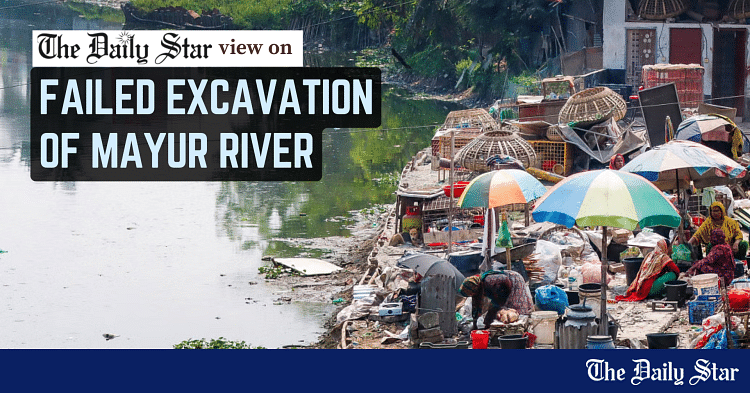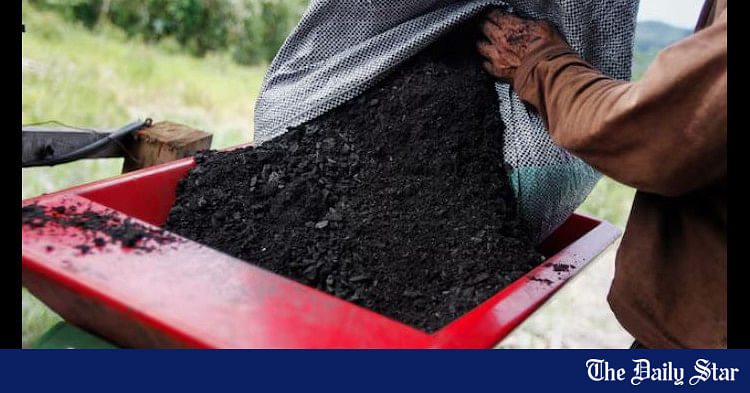- Copy to clipboard
- Thread starter
- #391
Saif
Senior Member
- Jan 24, 2024
- 11,835
- 6,658
- Origin

- Residence

- Axis Group


Five climate action reforms that are doable
No space for Climate change in the ongoing reform debates but actions are needed.
Five climate action reforms that are doable

In the past 17 years, 17 big cyclones have hit Bangladesh. So, climate change-induced losses and damages are real for our country. FILE PHOTO: REUTERS
Climate change, an undoubtedly neutral topic in Bangladesh's politics, doesn't have any space in the ongoing reform debates. Nevertheless, given its existential nature, it will be a missed opportunity if we don't take the following five doable actions soon to reform our climate action.
First, we have several good climate change-relevant plans in the country, including the National Adaptation Plan of Bangladesh (2023-2050) (NAP). However, we should prioritise only the NAP because it is very well-designed and the latest, and having too many investment plans is confusing. Besides, some Bangladeshi climate change experts think that adaptation should be our priority, not Loss and Damage (L&D). But, since adaptation measures have been failing to protect us from aggravated climate change impacts, taking L&D action is our next logical option. In the past 17 years (2007-2024), 17 big cyclones have hit Bangladesh. So, climate change-induced losses and damages are real for our country. The environment ministry, therefore, should adopt a national mechanism to figure out how the country should prepare itself, in terms of policy, capacity building, knowledge, and finance, by responding to worsening losses and damages.
Second, we should redefine our climate action. Instead of small pilot projects, we should scale up our proven options. We must also ensure many co-benefits from one investment. When we grow resilient crops in vulnerable locations, for example, we shouldn't only think about how many people it will feed, but also if it will maintain the soil health, and ensure social equity. In another approach, we need to bring in multiple compatible solutions in one place to maximise the impact. When we manage floods, for instance, we shouldn't only rely on engineering (grey solutions) or focus only on planting trees on the upstream watershed (green solutions). We need to harness grey, green, even blue (water-based) solutions, as all kinds of solutions have strengths and can complement each other.
Third, during the last 10 fiscal years, climate-relevant budgets have been 7.26-10.09 percent of the 25 ministries' and divisions' total budget, and 0.7-0.8 percent of our national Gross Domestic Product (GDP). In the next fiscal year (2025-26), we want the climate-relevant budget to include the ministries of culture, information, religion, and youth too, as all are crucial for climate action. The budget summary should not be based on the obsolete themes of the Bangladesh Climate Change Strategy and Action Plan, 2009 (BCCSAP). We need to bring in new themes. For example, adaptation money should be allocated under the "Locally Led Adaptation" theme, mitigation funds under "Green Growth" and "Just Transition", natural resource management activities under "Nature-based Solutions", and disaster risk management under the "L&D" theme. Knowledge and capacity building together must be cross-cutting themes, not separate ones. Further, the government should geographically (down to upazila level) allocate the climate budget based on vulnerability maps. Currently, we see serious anomalies in the geographical distribution of the Bangladesh Climate Change Trust Fund (BCCTF) (e.g. Dhaka and Barishal divisions receive 38.26 percent of the total fund). We must correct this inconsistency.
The fourth proposed action is on Bangladesh Climate Change Trust's (BCCT) governance. The seven sectoral ministries (e.g. local government, water, and agriculture) on the trustee board should be replaced, since these ministries are frequent recipients of the BCCTF. Instead, representatives of civil society, non-governmental organisations (NGOs), and academia should be included. In the technical committee, the number of non-government technical experts should be increased.
On December 31, 2024, the BCCT uploaded the lists of a total of 944 projects: 254 ongoing, 623 completed, and 68 terminated. For transparency and accountability, the monitoring and evaluation (M&E) reports of the ongoing projects and project completion reports of the terminated and completed projects should be made public. The environment ministry-led trustee board should also restructure the BCCT's M&E system by giving responsibility to regional NGOs and academia to reduce operating costs, increase efficiency, and encourage inclusive governance.
Finally, Bangladesh launched the "Bangladesh Climate and Development Partnership" to scale up cross-sectoral implementation of climate action. In addition to a coordination board, four working groups are part of its structure, covering climate finance, policy reforms, capacity building, and knowledge sharing. Since mid-December 2024, the Asian Development Bank (ADB) has been supporting the environment ministry to operationalise this platform. The ministry should harness this opportunity and work with the finance division to allocate operationalisation budget for 2025-26.
The environment ministry's current focus on protecting rivers is commendable. But, we need it to be active in the climate change arena too—not only to present a healthy report in the next climate change Conference of the Parties (COP), but also for the sake of Bangladesh's resilience.
Dr Haseeb Md. Irfanullah is an independent consultant working on the environment, climate change, and the research system. He is a visiting research fellow at the University of Liberal Arts Bangladesh (ULAB).
In the past 17 years, 17 big cyclones have hit Bangladesh. So, climate change-induced losses and damages are real for our country. FILE PHOTO: REUTERS
Climate change, an undoubtedly neutral topic in Bangladesh's politics, doesn't have any space in the ongoing reform debates. Nevertheless, given its existential nature, it will be a missed opportunity if we don't take the following five doable actions soon to reform our climate action.
First, we have several good climate change-relevant plans in the country, including the National Adaptation Plan of Bangladesh (2023-2050) (NAP). However, we should prioritise only the NAP because it is very well-designed and the latest, and having too many investment plans is confusing. Besides, some Bangladeshi climate change experts think that adaptation should be our priority, not Loss and Damage (L&D). But, since adaptation measures have been failing to protect us from aggravated climate change impacts, taking L&D action is our next logical option. In the past 17 years (2007-2024), 17 big cyclones have hit Bangladesh. So, climate change-induced losses and damages are real for our country. The environment ministry, therefore, should adopt a national mechanism to figure out how the country should prepare itself, in terms of policy, capacity building, knowledge, and finance, by responding to worsening losses and damages.
Second, we should redefine our climate action. Instead of small pilot projects, we should scale up our proven options. We must also ensure many co-benefits from one investment. When we grow resilient crops in vulnerable locations, for example, we shouldn't only think about how many people it will feed, but also if it will maintain the soil health, and ensure social equity. In another approach, we need to bring in multiple compatible solutions in one place to maximise the impact. When we manage floods, for instance, we shouldn't only rely on engineering (grey solutions) or focus only on planting trees on the upstream watershed (green solutions). We need to harness grey, green, even blue (water-based) solutions, as all kinds of solutions have strengths and can complement each other.
Third, during the last 10 fiscal years, climate-relevant budgets have been 7.26-10.09 percent of the 25 ministries' and divisions' total budget, and 0.7-0.8 percent of our national Gross Domestic Product (GDP). In the next fiscal year (2025-26), we want the climate-relevant budget to include the ministries of culture, information, religion, and youth too, as all are crucial for climate action. The budget summary should not be based on the obsolete themes of the Bangladesh Climate Change Strategy and Action Plan, 2009 (BCCSAP). We need to bring in new themes. For example, adaptation money should be allocated under the "Locally Led Adaptation" theme, mitigation funds under "Green Growth" and "Just Transition", natural resource management activities under "Nature-based Solutions", and disaster risk management under the "L&D" theme. Knowledge and capacity building together must be cross-cutting themes, not separate ones. Further, the government should geographically (down to upazila level) allocate the climate budget based on vulnerability maps. Currently, we see serious anomalies in the geographical distribution of the Bangladesh Climate Change Trust Fund (BCCTF) (e.g. Dhaka and Barishal divisions receive 38.26 percent of the total fund). We must correct this inconsistency.
The fourth proposed action is on Bangladesh Climate Change Trust's (BCCT) governance. The seven sectoral ministries (e.g. local government, water, and agriculture) on the trustee board should be replaced, since these ministries are frequent recipients of the BCCTF. Instead, representatives of civil society, non-governmental organisations (NGOs), and academia should be included. In the technical committee, the number of non-government technical experts should be increased.
On December 31, 2024, the BCCT uploaded the lists of a total of 944 projects: 254 ongoing, 623 completed, and 68 terminated. For transparency and accountability, the monitoring and evaluation (M&E) reports of the ongoing projects and project completion reports of the terminated and completed projects should be made public. The environment ministry-led trustee board should also restructure the BCCT's M&E system by giving responsibility to regional NGOs and academia to reduce operating costs, increase efficiency, and encourage inclusive governance.
Finally, Bangladesh launched the "Bangladesh Climate and Development Partnership" to scale up cross-sectoral implementation of climate action. In addition to a coordination board, four working groups are part of its structure, covering climate finance, policy reforms, capacity building, and knowledge sharing. Since mid-December 2024, the Asian Development Bank (ADB) has been supporting the environment ministry to operationalise this platform. The ministry should harness this opportunity and work with the finance division to allocate operationalisation budget for 2025-26.
The environment ministry's current focus on protecting rivers is commendable. But, we need it to be active in the climate change arena too—not only to present a healthy report in the next climate change Conference of the Parties (COP), but also for the sake of Bangladesh's resilience.
Dr Haseeb Md. Irfanullah is an independent consultant working on the environment, climate change, and the research system. He is a visiting research fellow at the University of Liberal Arts Bangladesh (ULAB).










